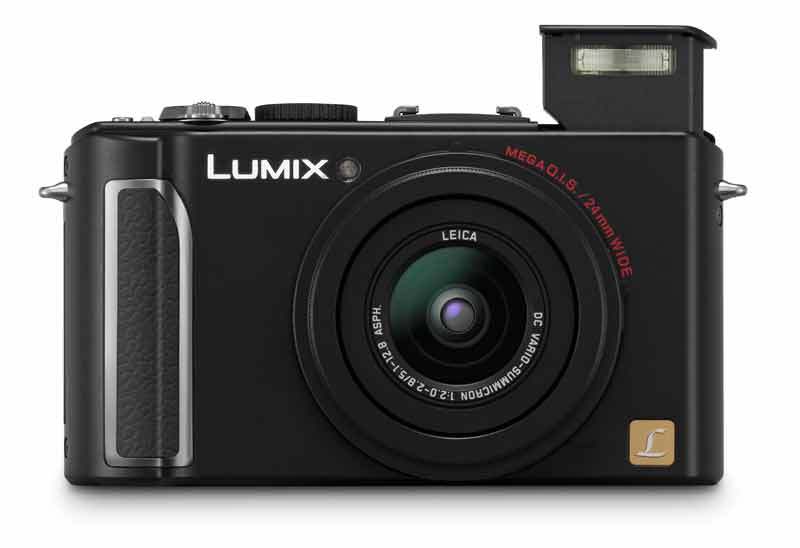Almost two years after the release of popular Lumix DMC-LX2, Panasonic has replaced it with the new flagship compact, the Lumix DMC-LX3.
Billed as an ideal back-up to a DSLR, the LX3 features the same 10 million pixel resolution as its predecessor, but is equipped with a newly developed1/1.63in CCD sensor. The photodiodes on the LX3?s sensor have been increased in size so that according to Panasonic, the new camera offers ?40% greater sensitivity?, and a wider dynamic range than equivalent 10 million pixel compact digital cameras.
Unlike the Lumix DMC-LX2, which featured a panoramic format sensor, the LX3 boasts its highest resolution in the sensor?s native 4:3 format, although 3:2 and 16:9 aspect ratios are also available at a reduced resolution. A new ?Multi-Aspect Mode? also allows photographers to capture an image in all three aspect ratios simultaneously.
Also new is a 24-60mm (equivalent) LEICA DC VARIO Sumicron zoom lens, with a very bright maximum aperture range of f/2-2.8, and Panasonic?s Mega OIS optical image stabilisation system. The Lumix DMC-LX3 lacks a built-in optical viewfinder, but an accessory finder is available, which shows 24mm (equivalent) and fits onto the camera?s hotshoe. Panasonic claims that the 460,000 dot LCD screen of the LX3 is easier to see in bright light than previous models, and features Panasonic?s ?Intelligent LCD? system, which automatically compensates for light levels by adjusting the screen?s brightness.
The Lumix DMC-LX3 is equipped with Panasonic?s Venus Engine IV image processor, which the company claims allows for finer grained, noise-free images, and also enables continuous shooting at up to 2.5fps, in raw+JPEG capture, and HD video capture.
Although Panasonic has stopped short of giving them brand names, nine ?film modes? are available in the Lumix DMC-LX3, – six colour and three monochrome ? which replicate the effect of shooting with different types of film. Other presets include an unusual ?Pinhole Camera? mode, which creates desaturated, heavily vignetted images. An automatic ?iA? shooting mode is also available which is designed to match the LX3?s various automatic features with the shooting conditions. With the camera set to ?iA? mode, the LX3 combines contrast and sensitivity adjustments with artificial intelligence features like face detection, for totally worry-free photography.
Fans of manual control will be pleased to see that the Lumix DMC-LX3 also offers aperture priority, shutter priority and fully manual exposure, as well as two custom shooting modes. The new camera is expected to retail at £399.99 (without optional viewfinder).
Also announced was the Lumix DMC-FZ28, the latest in Panasonic?s bridge camera lineup, the super-slim Lumix DMC-FX27 and the ultra high-resolution Lumix DMC-FX150.
The 10 million pixel FZ28 (329.99) features an 18x optical zoom from 27-486mm (equivalent), and the FX150 (£299.99) combines a 28-100mm (equivalent) wideangle zoom lens with an amazing 14.7 million pixel resolution ? the highest resolution of any current compact digital camera. The Lumix DMC-FX37 (£249.99) boasts a 25-125mm (equivalent) lens and 10 million pixel resolution, and a new ?Burst Flash? mode that allows continuous flash output to cover bursts of images at up to 6 fps at reduced resolution. All four new Lumix cameras are expected to be available in August.







